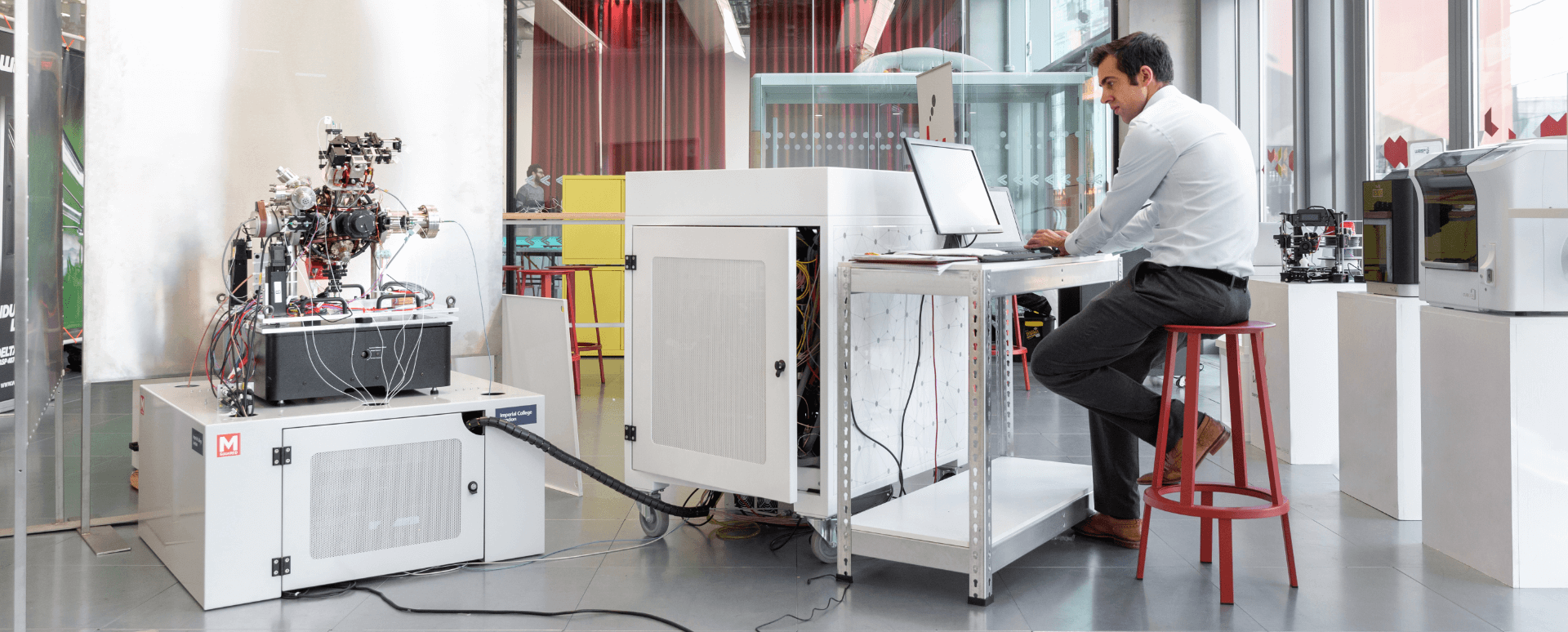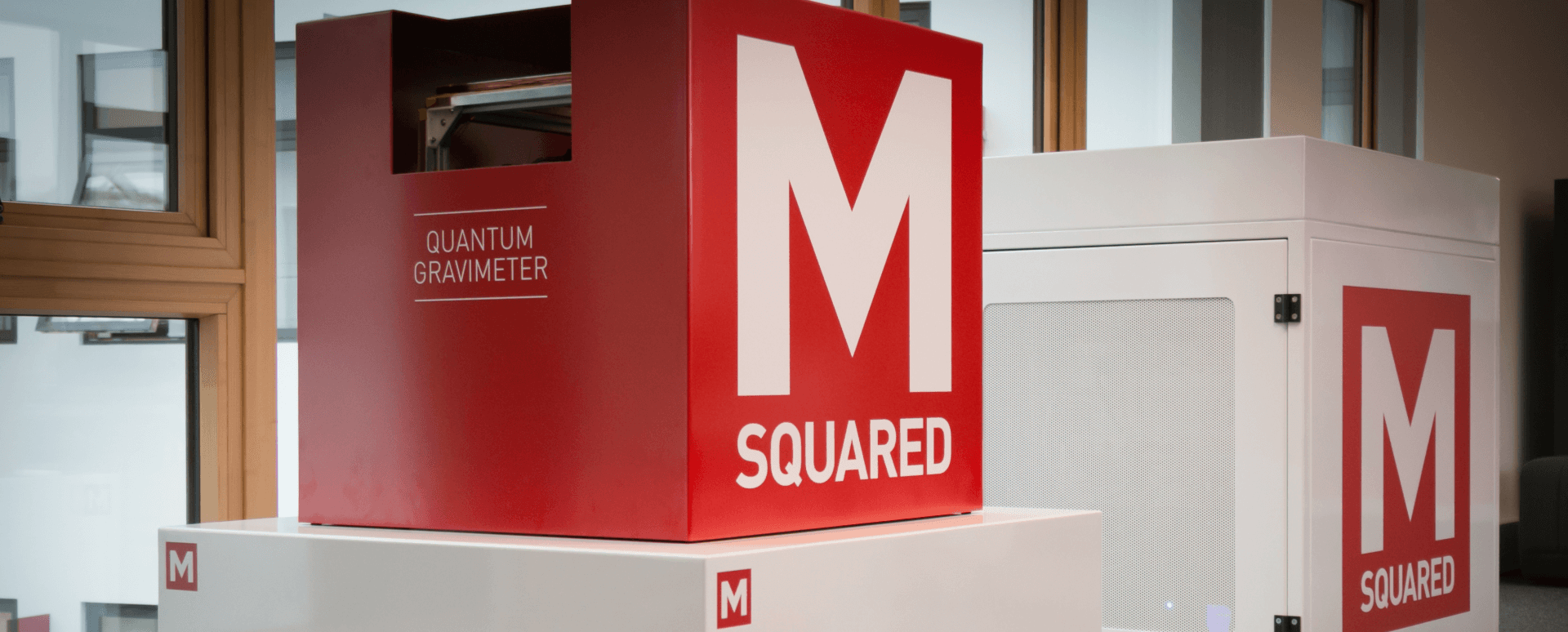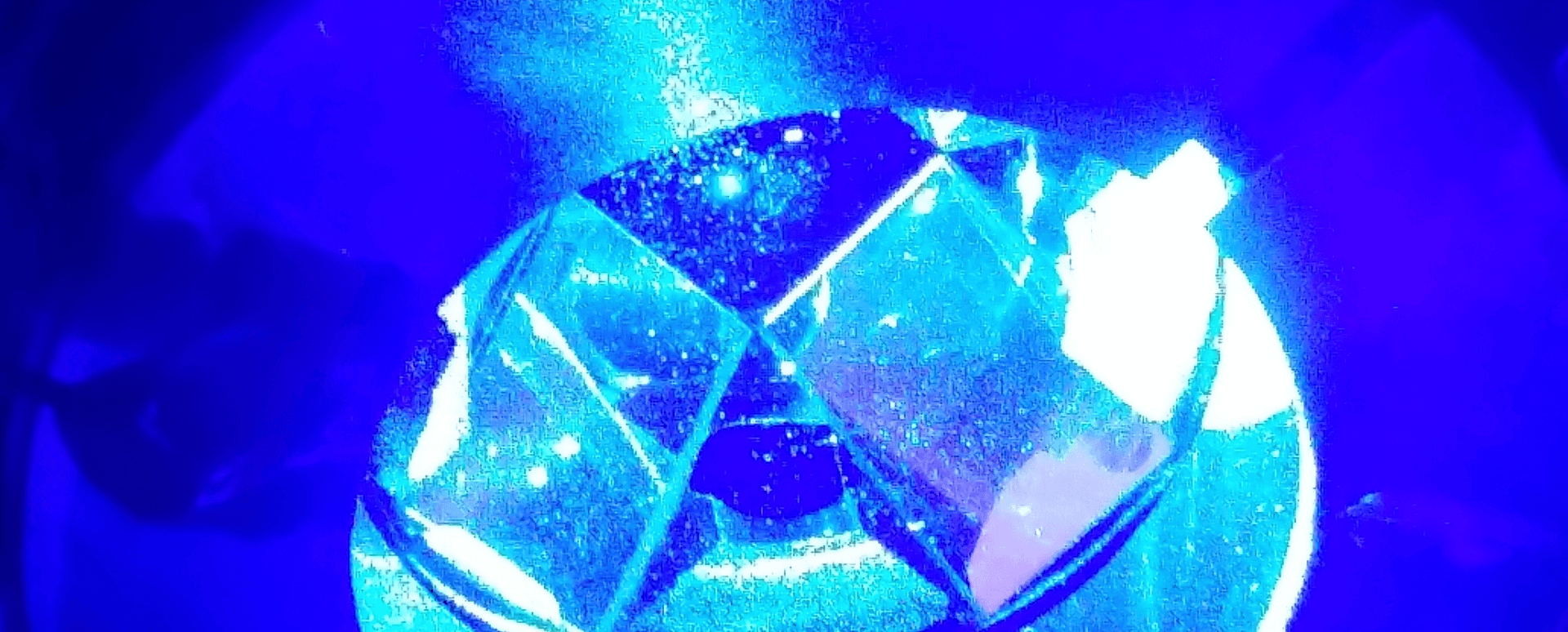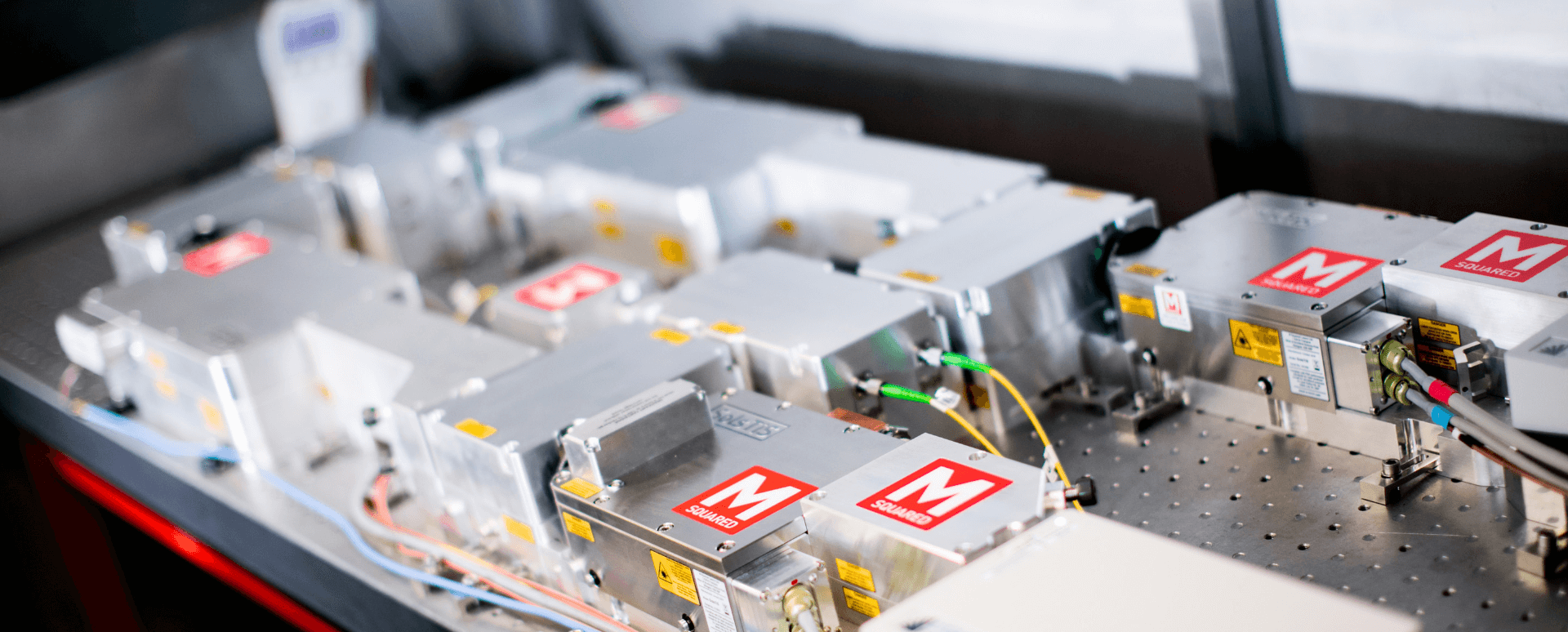M Squared is a global quantum technology company and quantum technology systems integrator – the first choice for world-leading research institutions and innovation partners.
As a global leader in quantum sensors, timing and computing, M Squared is delivering a range of products and programmes from its dedicated quantum centre. It has achieved several UK quantum firsts - the first commercial quantum gravimeter and the first commercial quantum accelerometer.
With a strong pedigree in engineering and commercialisation of high-end quantum products, the company is developing neutral atom and ion-based quantum computers, inertial sensors for gravity, acceleration and rotation as well as quantum timing devices. Its portfolio also consists of complementary optical systems and electronics.
 CREDIT: THOMAS ANGUS, IMPERIAL COLLEGE LONDON
CREDIT: THOMAS ANGUS, IMPERIAL COLLEGE LONDON
A quantum gravimeter measures the vertical acceleration of a cloud of ultra-cold atoms. Extending this idea to all three spatial dimensions results in a 3D quantum accelerometer; a device that uses atom interferometry to precisely measure accelerations in any direction. Combining this with quantum gyroscopes and clocks will enable a navigation device that is highly accurate and completely independent of external communications, including satellites.
M Squared has developed the UK’s first commercial 3D quantum accelerometer with collaborators at Imperial College London. We are perfecting the ‘quantum hardware’ that is required to create a fully commercialised quantum sensor - accurate and robust enough to replace current state of the art navigation systems.
Find out how our quantum accelerometer works in this guide > Download our quantum accelerometer datasheet > Watch the quantum accelerometer video >
Quantum gravimeters can be used to detect extremely small changes in the local gravity field. M Squared’s quantum gravimeter operates by firstly laser cooling a cloud of atoms close to absolute zero, before using a further set of laser beams to ‘split’ and ‘recombine’ the atom cloud, similar to an optical interferometer. As the cloud falls, the atom’s quantum states accumulate a phase difference due to gravity - which we interrogate and readout with a final set of laser pulses.
Because of the sensitive nature of the quantum ‘splitting’ process, the lasers involved must have an extremely low phase noise and a well-defined frequency separation. We developed our phase locked SolsTiS system for this purpose, as well as other related applications.
In 2017 M Squared developed the UK’s first commercial gravimeter, since then work has focused on taking the technology out of the laboratory and into the field for real world applications – with trials on moving platforms being conducted in 2019. We are now working on developing our second generation gravimeter which will offer an increased sensitivity and enhanced repetition rate.
Find out how our quantum gravimeter works in this guide > Download our quantum gravimeter datasheet >
The invariant properties of trapped atoms make them ideal candidates for precision timekeeping. In an optical lattice clock, atoms are laser cooled to micro-Kelvin temperatures before being loaded into an optical lattice. A narrow linewidth atomic transition can then be used as a reference for the clock laser - which is the clock oscillator. The high frequency and narrow linewidth of the optical transitions give lattice clocks a precision and accuracy several orders of magnitude greater than that of current microwave frequency standards.
Using novel laser sources, control systems, and vacuum chambers, M Squared is developing a field deployable strontium lattice clock to extend the capabilities of lab-based clocks, enabling applications such as high-speed financial trading and satellite-free navigation. Progress in this project so far has seen a commercial first in the UK with the demonstration of cooling and trapping of strontium atoms at M Squared. The optical lattice itself is created by forming a standing wave of light from a low-noise and high-power laser – these requirements make M Squared’s SolsTiS platform the ‘lattice laser’ of choice for time standards laboratories around the world.
M Squared has a long history of working with labs developing the world’s most accurate clocks, for example, NPL (UK), NIST and JILA (USA), SYRTE (France), RIKEN (Japan), PTB (Germany), INRIM (Italy) and ECNU (China).
Download our strontium optical lattice clock datasheet >
Classical computers process information using logical bits which have two states, 0 and 1. These logic states can similarly be represented by a two-level quantum system, known as a qubit. Quantum mechanics allows a qubit to be placed in a superposition state and to be entangled with other qubits. Combined with sophisticated quantum algorithms, the unique properties of quantum computers could potentially provide an exponential speed up on otherwise time-consuming calculations.
The long-lived states in ions and neutral atoms present an excellent basis for a qubit. Through laser cooling and trapping techniques a quantum register of single atoms can be implemented. Quantum operations are then performed using finely tuned laser fields to manipulate the atomic states and perform gate operations. Stringent requirements on laser properties for high fidelity qubit operations, such as phase noise and stability, has seen the SolsTiS platform routinely used in the world-leading laboratories for neutral atom and ion quantum computing.
Find out how our quantum processor, Maxwell, works in this guide >We are working with quantum scientists at the University of Strathclyde to develop a new platform for quantum computing based on scalable arrays of neutral atoms that is able to overcome the challenges of scaling faced in competing technologies. We will develop new hardware to cool and trap arrays of over 100 qubits which will be used to perform both analogue and digital quantum computation by exploiting the strong long-range interactions of highly excited Rydberg atoms.
Some of the world’s leading systems for quantum computing use qubits based on single atomic ions which are trapped using oscillating electric fields. With exceptionally low noise, spectral purity and high-power output, M Squared’s SolsTiS platform has enabled several landmark achievements with these trapped-ion qubits. In the future, our laser technology will continue to play a key role in enabling accurate control over the large number of trapped-ion qubits that will be required for useful quantum computation.
As well as our own integrated quantum systems, M Squared has developed a suite of components and subsystems that are enabling quantum scientists. Following the design principles of our SolsTiS laser system, we have engineered these components to aid the advancement of quantum technologies around the world.
Researchers just invented a new kind of compass. It could dramatically change the way we navigate our world.
FORTUNE MAGAZINE
M Squared’s SolsTiS laser has completely transformed our quantum optics experiments at Durham. We have used it in several very different experiments that have all produced breakthroughs.
PROFESSOR CHARLES STUART ADAMS Director of the Joint Quantum Centre, University of Durham
The company’s precision laser devices have been used to advance the understanding of quantum mechanics.
THE SUNDAY TIMES
Phone +44 (0)141 945 0500
Head Office
Phone +1-617-401-2368
USA
Phone +44 (0)1483 685170
M Squared Life